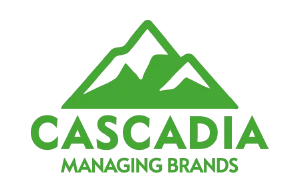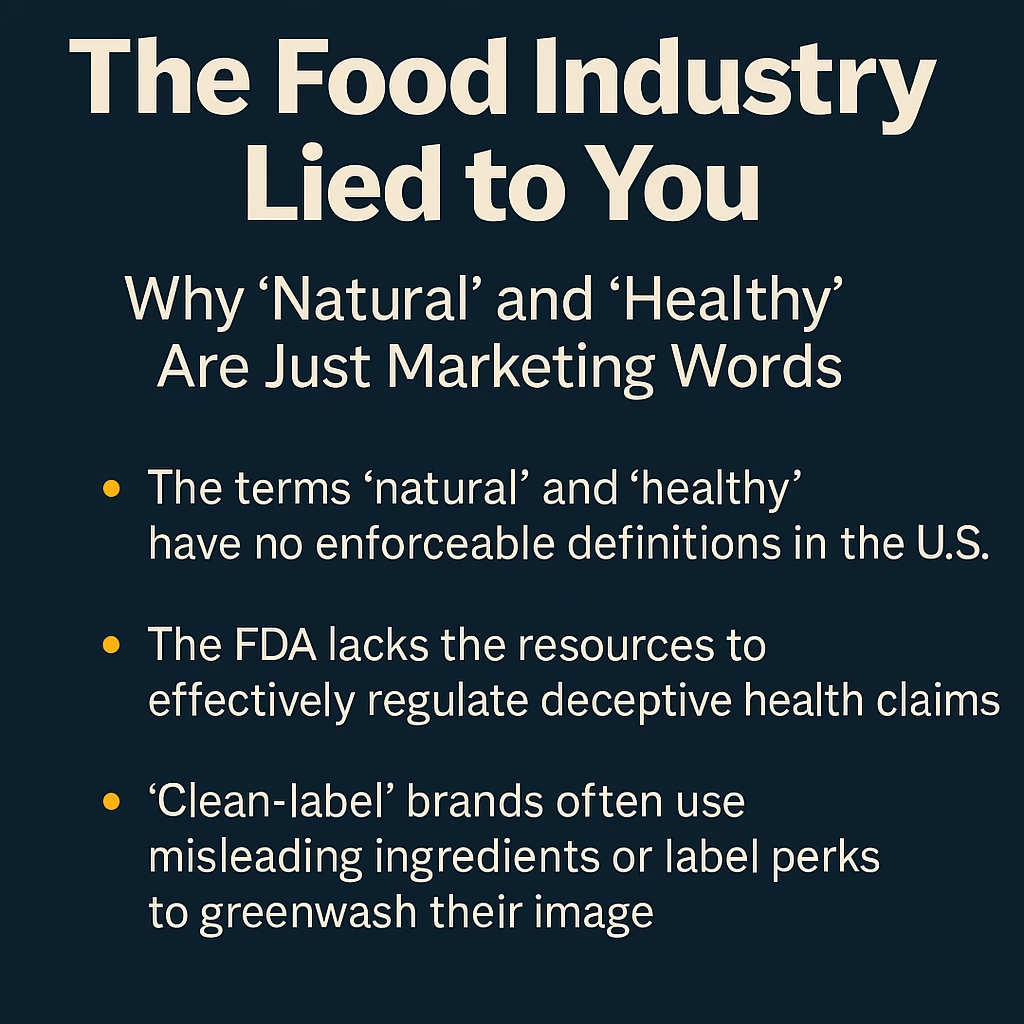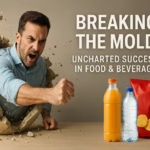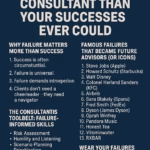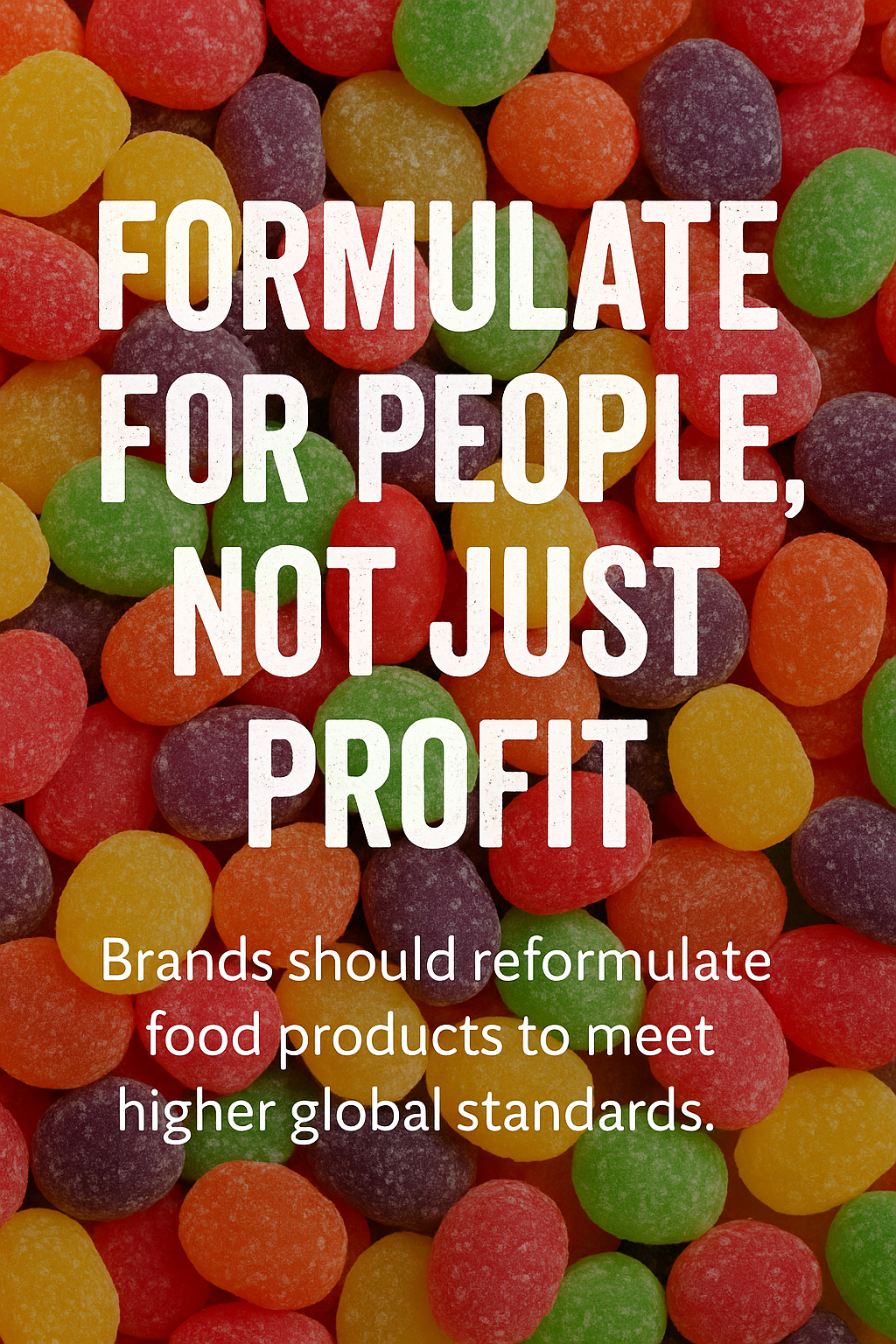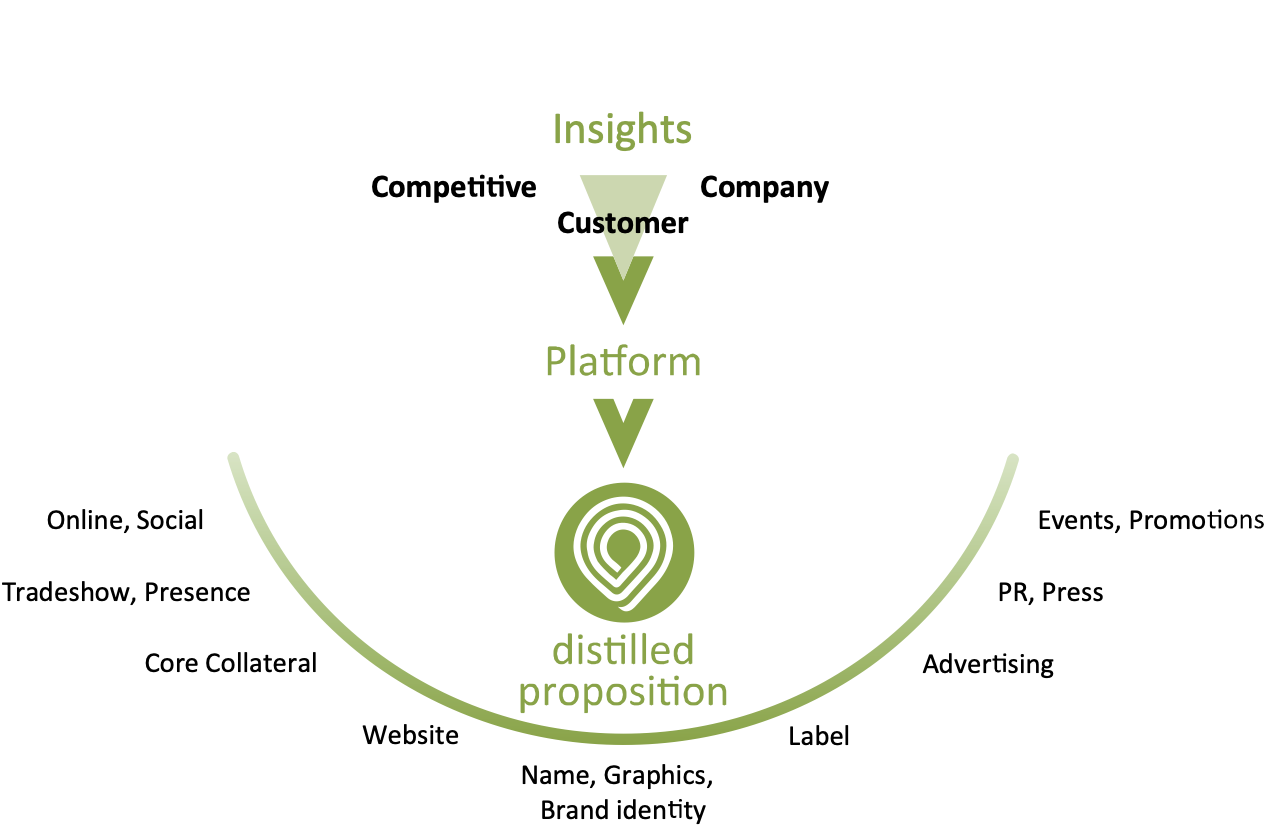The functional beverage space is evolving—fast. What started with protein shakes and vitamin waters has transformed into a sophisticated market…
The Food Industry Lied to You: Why ‘Natural’ and ‘Healthy’ Are Just Marketing Words
ntroduction
Walk down any grocery store aisle and you’re likely to see a parade of buzzwords shouting for your attention: natural, healthy, clean, immune-boosting, wholesome, and the ever-popular made with real ingredients. These terms are carefully designed to make you feel good about what you’re buying. But behind the shiny packaging lies a harsh truth: most of these labels are marketing constructs with little to no regulatory meaning. The food industry isn’t just selling products—it’s selling perception. And in many cases, it’s lying.
What Does “Natural” Really Mean?
Let’s start with one of the most abused terms in the industry: natural.
In the United States, the FDA has no formal definition for what constitutes a “natural” food. According to the agency, they “have not objected to the use of the term if the food does not contain added color, artificial flavors, or synthetic substances.” That’s it. There are no standards regarding:
- Pesticide use
- GMO content
- Processing methods
- Antibiotics or hormones in meat
Case Study: “Natural” Cereals
Many breakfast cereals advertise themselves as natural. Yet they may contain genetically modified corn, processed sugars, and industrial additives—all perfectly legal under the natural label.
In Europe, the story is very different. The European Food Safety Authority (EFSA) permits the use of the term “natural” only when a product meets strict criteria. Ingredients must be derived from nature without chemical modification, and any processing must be physical (such as grinding or fermentation), not synthetic. Moreover, flavorings labeled as “natural” must be derived from the named source—e.g., a natural strawberry flavor must come from strawberries.
In Canada, the Canadian Food Inspection Agency (CFIA) defines “natural” as foods that have not been significantly altered by processing and do not contain added vitamins, minerals, artificial flavoring agents, or food additives. Any ingredient derived from a plant or animal source must be minimally processed. The definition also restricts the use of synthetic preservatives, bleaching agents, and chemical processing aids.
Comparison Summary:
- U.S.: No formal definition; loosely interpreted.
- Canada: Defined by CFIA; prohibits additives, artificial flavors, and significant processing.
- EU: Strict criteria on ingredient source and processing methods; regulated by EFSA.
The gap between the U.S. and its global peers is stark—and it means that the same food can be labeled “natural” in America while being disallowed from using that label in Canada or Europe. And yet, the inconsistencies don’t end there: sucralose, a synthetic artificial sweetener, is not considered natural in the United States, yet is often deemed natural in the European Union, where it can be included in certain products marketed as natural.
In Canada, sucralose is allowed for use as a food additive but cannot be marketed as “natural.” The CFIA holds a stricter interpretation similar to that of the U.S., reinforcing that artificial sweeteners—regardless of source or safety profile—cannot be labeled or implied as natural in consumer marketing.
This illustrates just how fragmented and politically influenced the term “natural” has become, depending entirely on jurisdiction—not science. The European Food Safety Authority (EFSA) does not permit the use of the term “natural” unless the product meets strict criteria and is free from synthetic processing.
The Myth of “Healthy”
The word healthy seems straightforward, right? Wrong.
The FDA currently allows food manufacturers to use the term healthy as long as the product meets certain nutrient content claims. That includes:
- Low in saturated fat
- Low in cholesterol
- Certain vitamin and mineral thresholds
But here’s where it gets tricky: a food can be labeled healthy while still being ultra-processed, loaded with artificial sweeteners, and packed with sodium.
Case Study: “Healthy” Frozen Meals
Some frozen meals advertised as “heart healthy” contain over 600mg of sodium per serving—a quarter of your daily recommended intake.
The Clean Label Illusion
Another industry darling is the term clean label, which implies purity, minimal processing, and transparency. But there is no legal definition for this term either. Brands can switch out synthetic-sounding ingredients for more “natural” sounding ones without changing the product’s nutritional profile at all.
Example:
- Instead of MSG, companies use yeast extract or hydrolyzed vegetable protein — which contain the same glutamates that MSG does.
Consumers are none the wiser.
How Marketing Outpaces Regulation
The U.S. regulatory environment is woefully behind consumer sentiment. Food companies take advantage of this gap:
- Labels are reviewed after products hit the market.
- Enforcement is largely reactive.
- There are no pre-approval processes for terms like natural, healthy, or clean.
Contrast this with the EU, where misleading advertising is grounds for immediate action and companies must prove their claims.
Class Action Lawsuits: The Pushback Against Deceptive Claims
While regulatory bodies may lag behind, consumers have pushed back through the legal system. Class action lawsuits have become one of the few ways to hold food and beverage companies accountable for deceptive labeling.
Example 1: General Mills – Nature Valley Bars
In 2016, General Mills agreed to remove the word “natural” from Nature Valley granola bars after a lawsuit revealed they contained glyphosate, a pesticide linked to cancer.
Example 2: Kellogg’s – Kashi Cereal
Kellogg’s paid $5 million in a class action settlement after being sued for labeling its Kashi products as “all-natural” while they contained synthetic and bioengineered ingredients.
Example 3: Naked Juice (PepsiCo)
Naked Juice settled for $9 million over misleading claims that its juices were “all natural,” despite the presence of synthetic ingredients like ascorbic acid and synthetic fibers.
These cases demonstrate that while regulatory agencies may be slow to act, consumers are finding alternative means of accountability through litigation.
FDA Weaknesses and Under-Resourcing
One of the biggest issues with food regulation in the U.S. is the FDA’s lack of enforcement capacity. As of recent reports, the FDA has only around 8,000 inspectors, but only a fraction of those are assigned to food safety, and even fewer to labeling enforcement. Considering the FDA oversees more than 78% of the U.S. food supply, the resource gap is staggering.
Inspections are infrequent. Many facilities go years without visits, and misleading claims on packaging are rarely addressed unless brought to light by consumer complaints or media coverage.
In addition, the FDA has limited authority to mandate recalls or take immediate action without extensive investigation and legal processes.
The Craziness of GRAS and Self-Affirmation
Perhaps the most absurd loophole in U.S. food regulation is the GRAS system: Generally Recognized As Safe.
Here’s how it works:
- Companies can self-affirm that a new ingredient is GRAS.
- They do not have to notify the FDA.
- They can hire their own experts to review safety.
- There is no public transparency or peer-reviewed oversight.
This has allowed novel chemicals, preservatives, and flavorings to enter the food system without any formal FDA review.
A 2010 Government Accountability Office (GAO) report found that the FDA often has no knowledge of substances introduced into the food supply under GRAS.
Psychological Manipulation: Health Halos and Food Guilt
Brands use carefully chosen words and imagery to construct a health halo around products. This is a psychological trick:
- Add a leaf to the logo
- Use earth tones
- Include words like ancient grains, light, or guilt-free
The result? Consumers associate the product with health, even when it’s not.
Example: Vitamin water with 33g of sugar—more than a can of soda—can still look like a wellness product.
International Ingredient Differences
Ever noticed how U.S. versions of food products often have longer, more synthetic ingredient lists than their EU or Canadian counterparts? Here are a few examples:
Kellogg’s Frosted Flakes
- U.S.: Includes BHT (a preservative banned in the EU)
- EU: No BHT; fewer artificial colors
Doritos Nacho Cheese
- U.S.: Artificial colors like Red 40 and Yellow 6
- UK: Uses paprika extract and annatto for color
Why the discrepancy? Stricter regulations abroad and consumer backlash against synthetic additives.
What Can Be Done?
The Ethics of Self-Regulation in the U.S. Food Industry
At the core of the American food labeling problem lies a deeper ethical issue: corporate responsibility versus public health. U.S. food companies are fully aware of what ingredients they use, and they clearly understand the global regulatory landscape. If they can reformulate products to exclude artificial dyes, high-fructose corn syrup, or synthetic additives for international markets like Canada and the EU—then the question becomes: why don’t they do it for U.S. consumers?
The answer lies in profit-driven decisions, cost-cutting, and weak domestic oversight. Artificial colors, for instance, are cheaper and easier to source than natural alternatives. U.S. consumers have historically been less informed or empowered than their EU counterparts when it comes to food additives and ingredient transparency.
This is not just a regulatory failure—it’s an ethical one. When food giants knowingly sell products with potentially harmful ingredients domestically, while offering cleaner, safer versions elsewhere, they reveal a fundamental disregard for their own population’s well-being.
If the U.S. consumer is seen as less worthy of protection simply because the regulatory environment allows it, then the problem isn’t just in Washington—it’s in the boardroom.
Top 10 U.S. Food Companies: Profits vs. Public Trust
Here is a snapshot of the largest U.S.-based food companies, their most recent annual profits, and how much their CEOs earned through salary, bonuses, and stock options:
| Company | 2023 Net Profit | CEO | 2023 CEO Compensation |
|---|---|---|---|
| PepsiCo | $9.1B | Ramon Laguarta | $28.4M |
| Coca-Cola | $10.7B | James Quincey | $24.8M |
| Kraft Heinz | $2.8B | Miguel Patricio | $20.5M |
| General Mills | $2.6B | Jeffrey Harmening | $15.1M |
| Kellogg’s (Kellanova) | $1.4B | Steven Cahillane | $12.3M |
| Nestlé USA* | $16.1B (global) | Steve Presley | $10.9M (estimate) |
| Mondelez Intl. | $4.3B | Dirk Van de Put | $17.1M |
| Conagra Brands | $1.9B | Sean Connolly | $13.5M |
| Tyson Foods | $2.3B | Donnie King | $12.2M |
| Hormel Foods | $960M | Jim Snee | $11.7M |
*Nestlé is a Swiss multinational, but its U.S. division dominates many household brands in the U.S. market.
These compensation packages raise a critical question: If companies can afford to pay executives tens of millions in bonuses, can they not afford to reformulate products to meet higher ethical and health standards?
Until the American food system prioritizes public health over profit margins, voluntary self-regulation will continue to fail the very people it claims to serve.
What Will HHS Secretary Robert Kennedy, Jr. Say—and What Will He Actually Do?
Robert F. Kennedy Jr., now serving as Secretary of Health and Human Services, is not only a former boss of mine but also a friend of over 20 years. While some view him as a controversial figure—and he has certainly made many controversial statements—there is no question that Bobby is deeply committed to reforming public health policy. His passion is real, and when it comes to the FDA and food regulation, he has long been an outspoken critic of industry influence and regulatory complacency.
Many expect that under his leadership, we may finally see meaningful change in how food and beverage companies are held accountable. He is likely to champion reforms such as:
- Eliminating the GRAS self-affirmation loophole
- Mandating clearer definitions of marketing terms like “natural” and “healthy”
- Increasing funding for food safety inspections and consumer protections
However, expectations and reality may diverge. The entrenched interests of the food lobby, limited FDA jurisdiction, and political gridlock could hinder bold reforms. Critics argue that despite his rhetoric, systemic change will require bipartisan Congressional support, significant budget reallocations, and resistance to industry pressure—none of which will be easy to achieve.
Still, his leadership places these issues back in the spotlight. Whether real action follows remains to be seen.
With Robert F. Kennedy Jr. now serving as Secretary of Health and Human Services, many expect a dramatic shift in how food and beverage regulations are enforced. Kennedy has long positioned himself as a health advocate and critic of corporate influence in public health policy. He is likely to champion reforms such as:
- Eliminating the GRAS self-affirmation loophole
- Mandating clearer definitions of marketing terms like “natural” and “healthy”
- Increasing funding for food safety inspections and consumer protections
However, expectations and reality may diverge. The entrenched interests of the food lobby, limited FDA jurisdiction, and political gridlock could hinder bold reforms. Critics argue that despite his rhetoric, systemic change will require bipartisan Congressional support, significant budget reallocations, and resistance to industry pressure—none of which will be easy to achieve.
Still, his leadership places these issues back in the spotlight. Whether real action follows remains to be seen.
For Consumers:
- Read ingredient lists, not just front-of-pack claims
- Be skeptical of terms like natural, clean, or real
- Use resources like the Environmental Working Group (EWG) or Fooducate
For Brands:
- Stop chasing health halos—build actual trust
- Invest in transparency and explain your sourcing
- Avoid the temptation to greenwash or healthwash your marketing
For Regulators:
- Implement clear, enforceable definitions
- Require front-of-pack disclaimers for loosely defined terms
- Increase penalties for misleading claims
For Consumers:
- Read ingredient lists, not just front-of-pack claims
- Be skeptical of terms like natural, clean, or real
- Use resources like the Environmental Working Group (EWG) or Fooducate
For Brands:
- Stop chasing health halos—build actual trust
- Invest in transparency and explain your sourcing
- Avoid the temptation to greenwash or healthwash your marketing
For Regulators:
- Implement clear, enforceable definitions
- Require front-of-pack disclaimers for loosely defined terms
- Increase penalties for misleading claims
Conclusion
We live in an era where the average consumer is more educated than ever—but still regularly misled. The words natural and healthy have become tools of manipulation rather than indicators of integrity. Until regulations catch up, it’s up to consumers, watchdogs, and forward-thinking brands to shine a light on the truth.
Because the real definition of healthy should be something we all agree on. And natural should mean more than “we didn’t add blue dye this time.”
If you found this article enlightening, check out our other resources on clean labeling, distribution strategy, and what makes food and beverage brands succeed or fail in today’s market.
